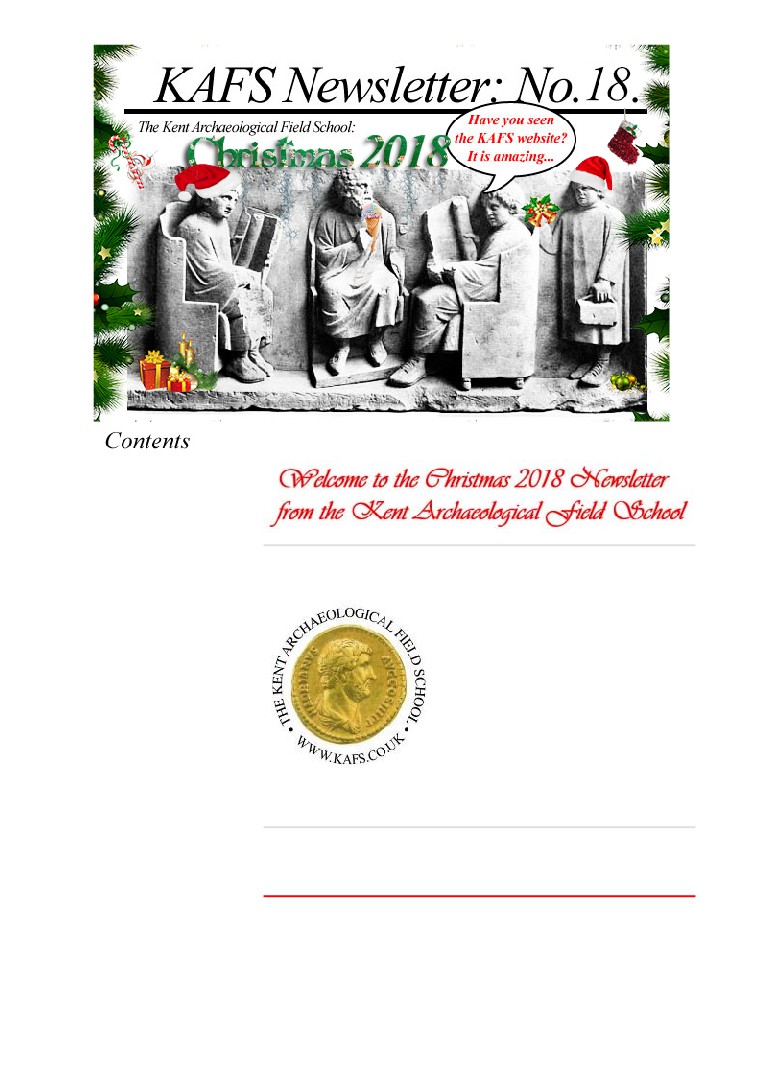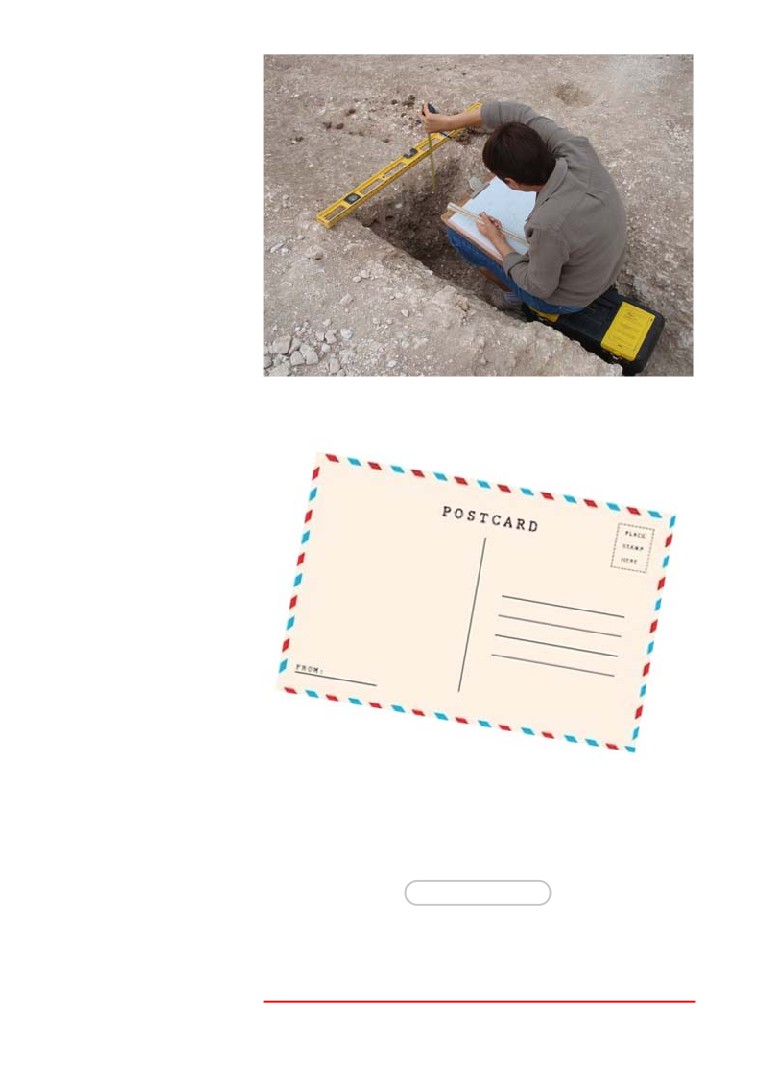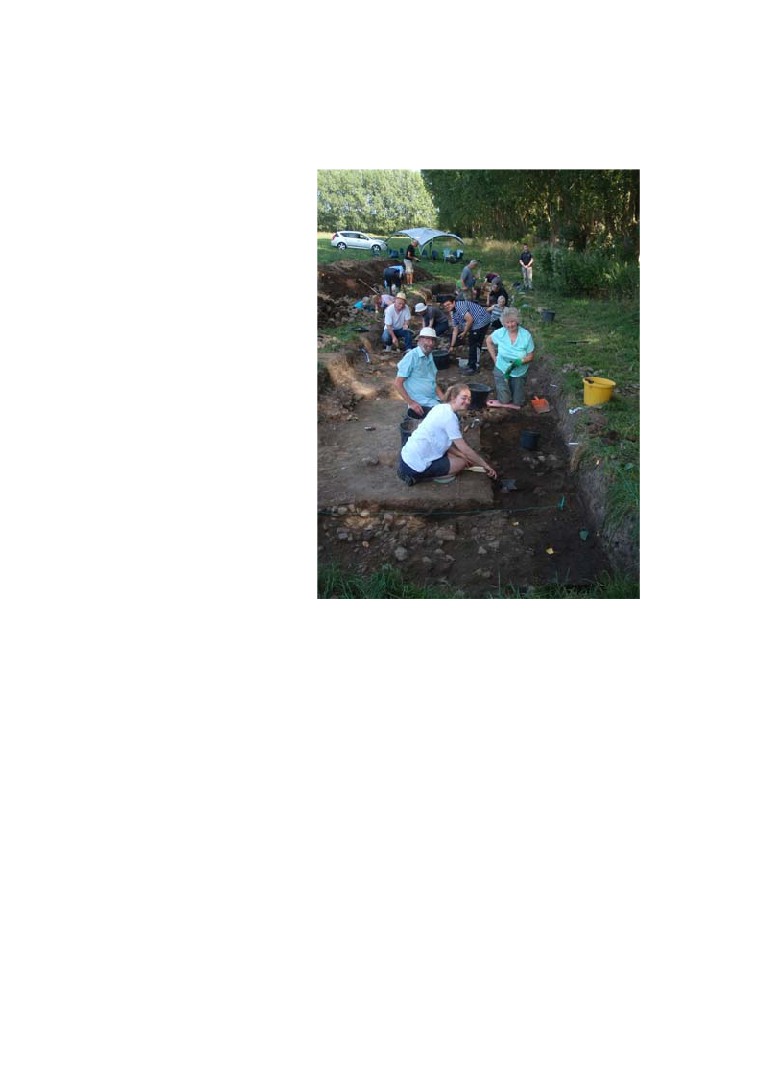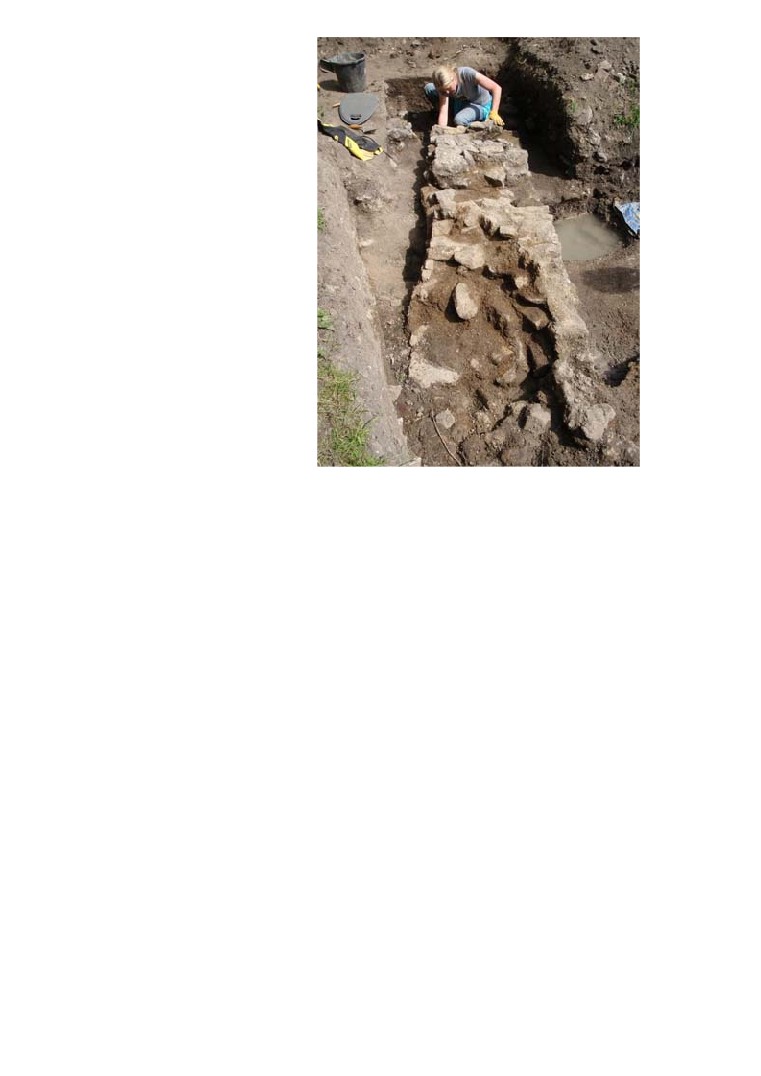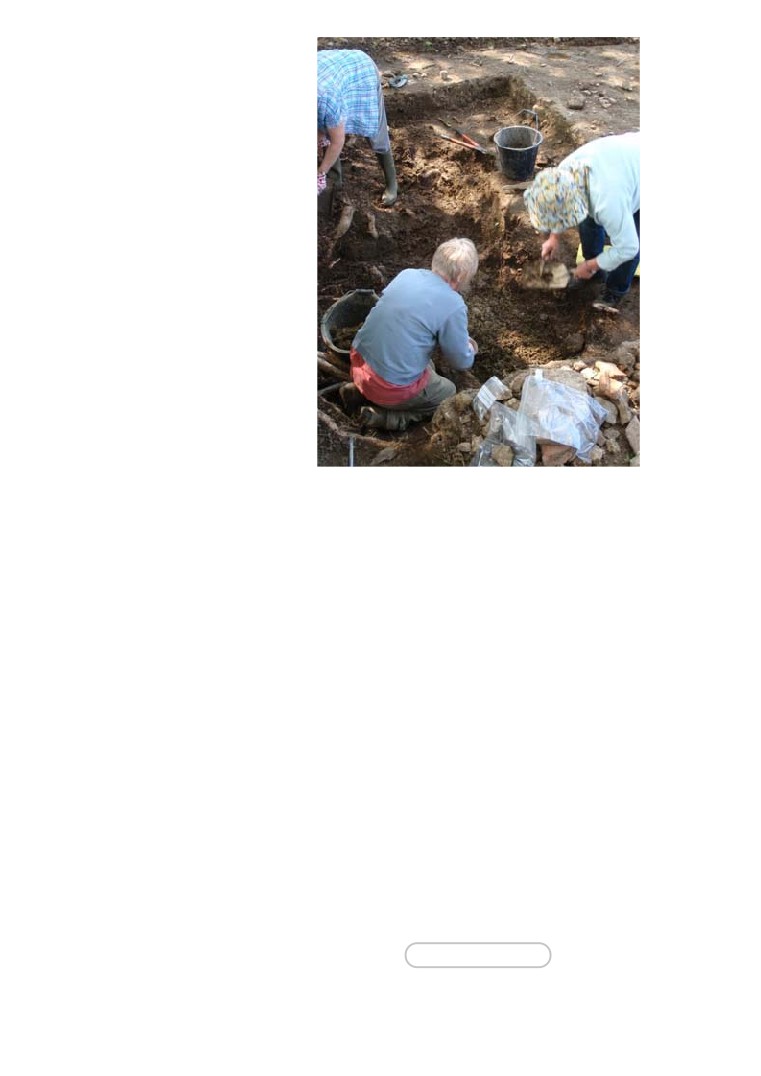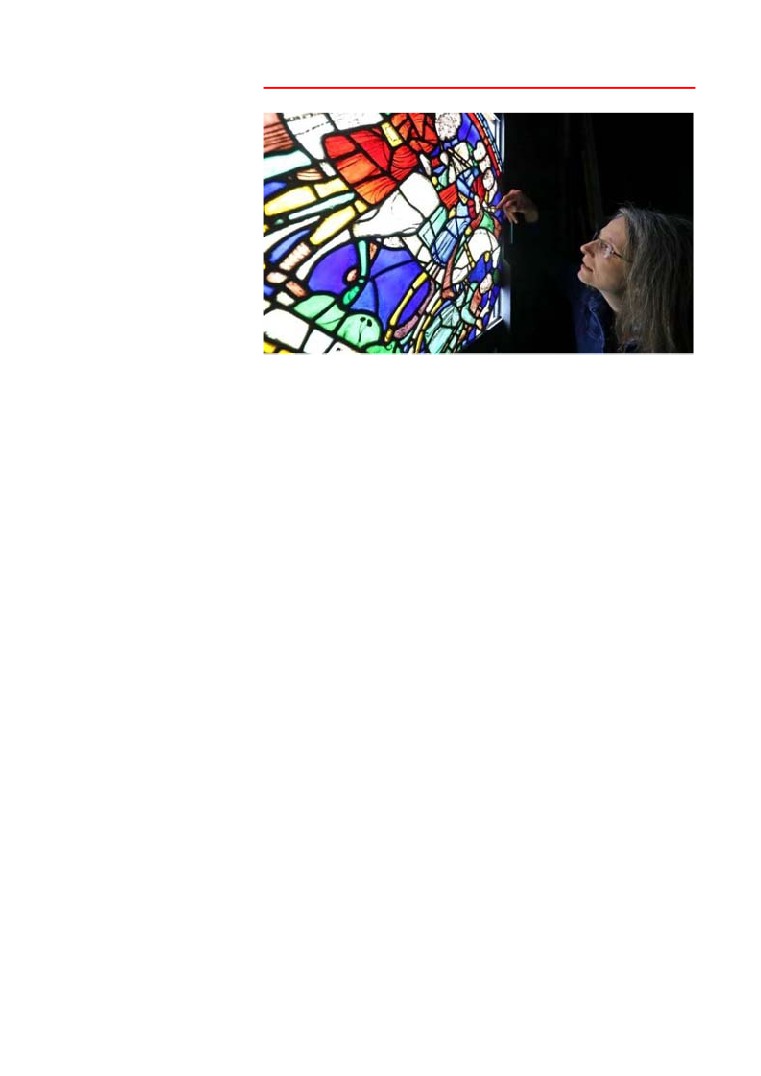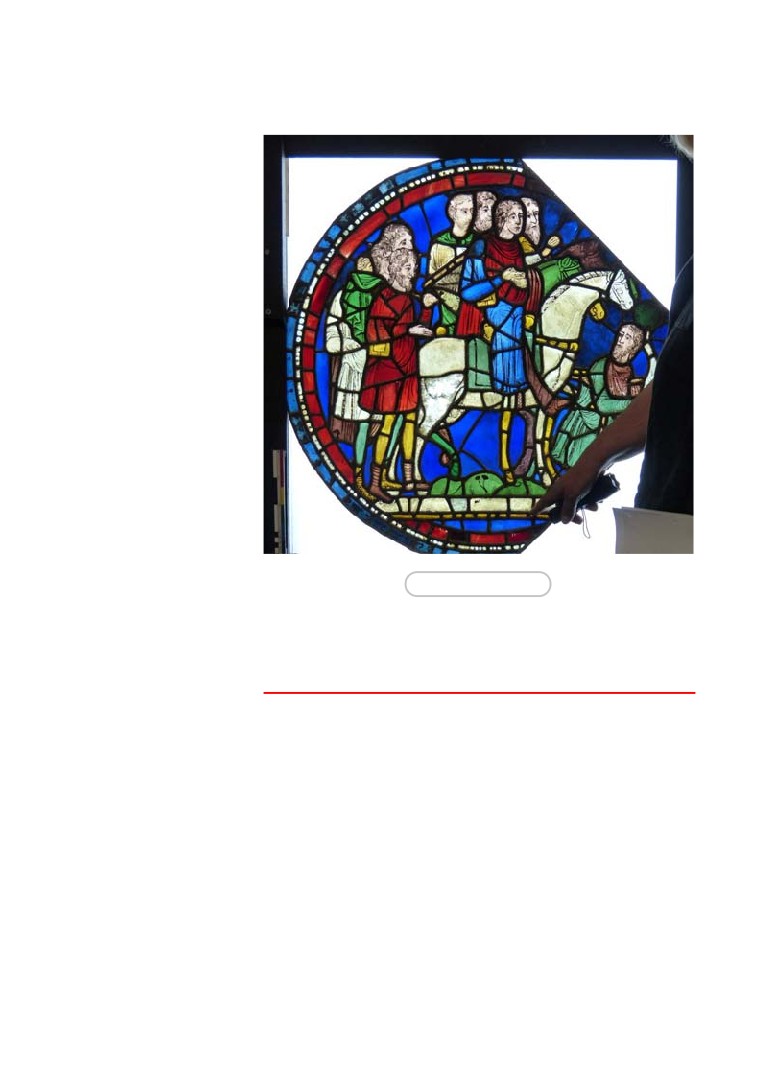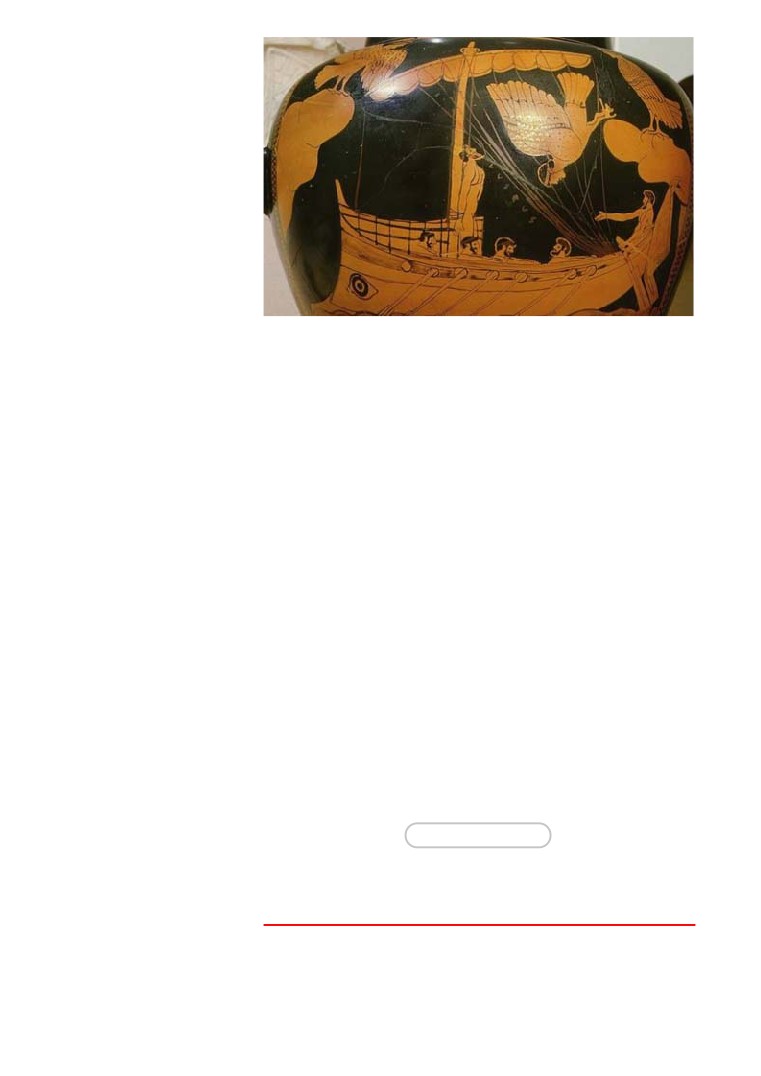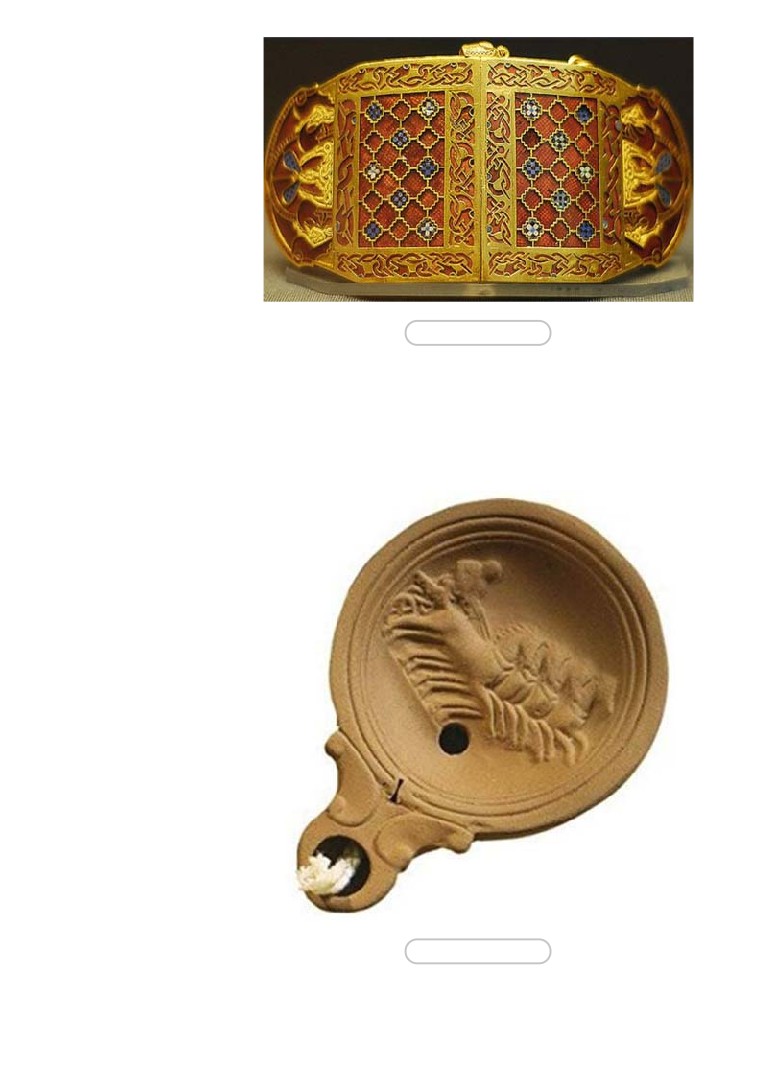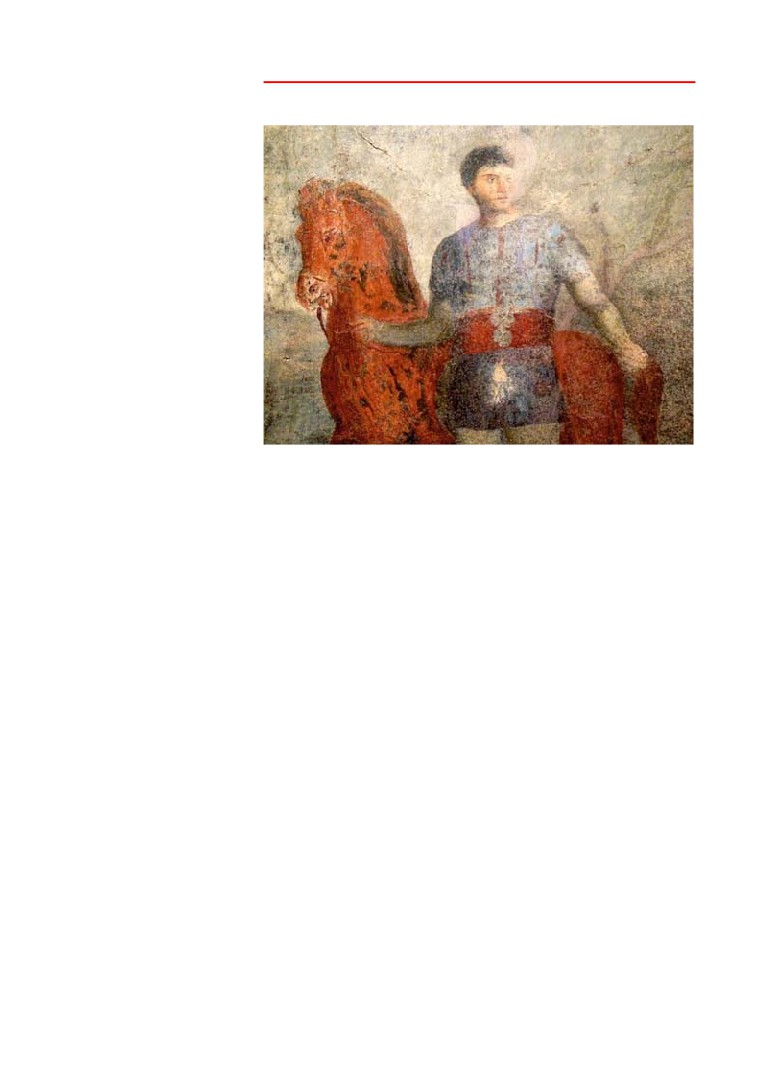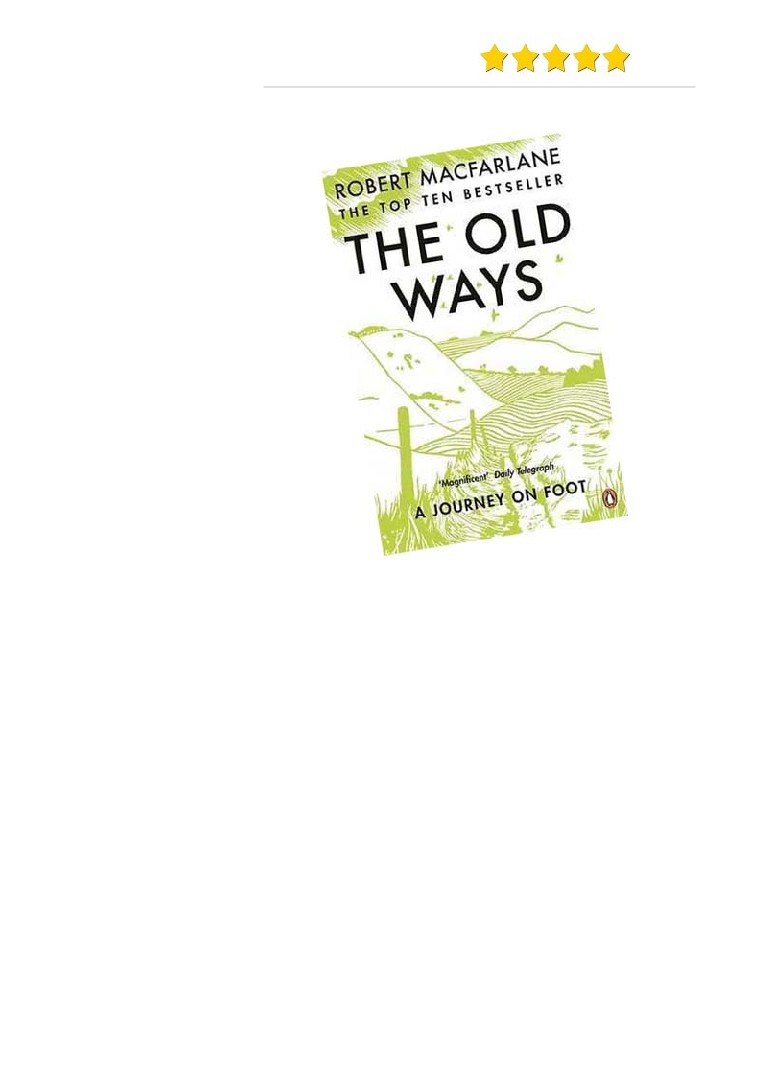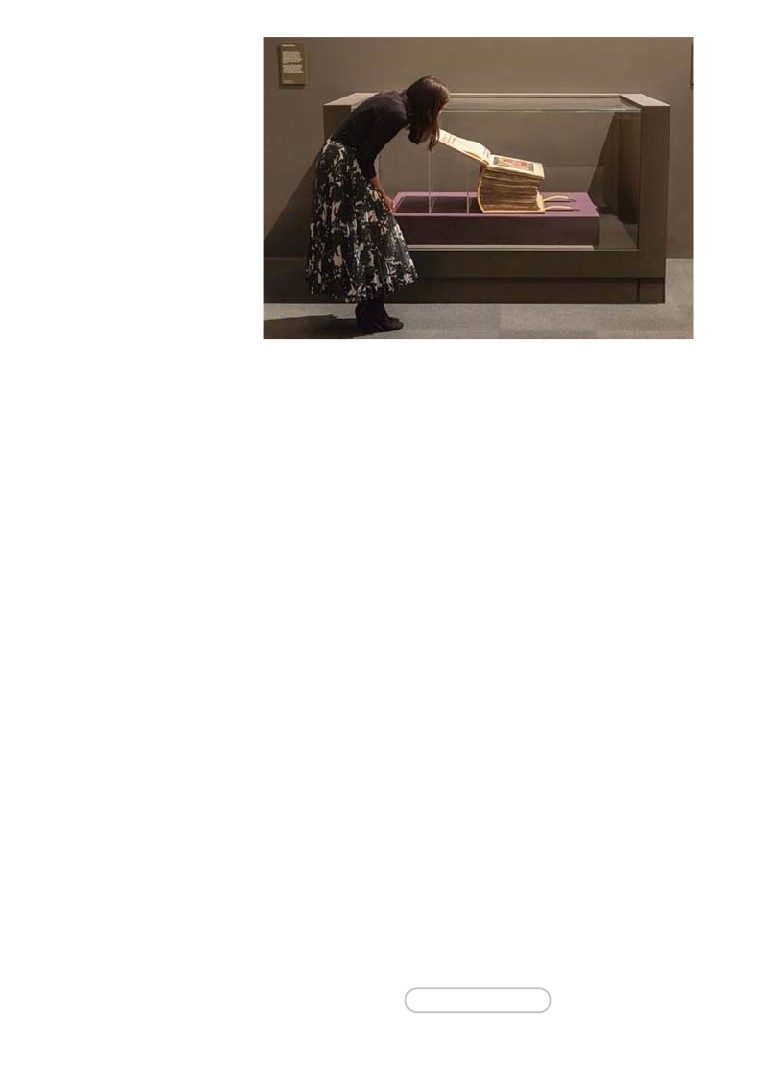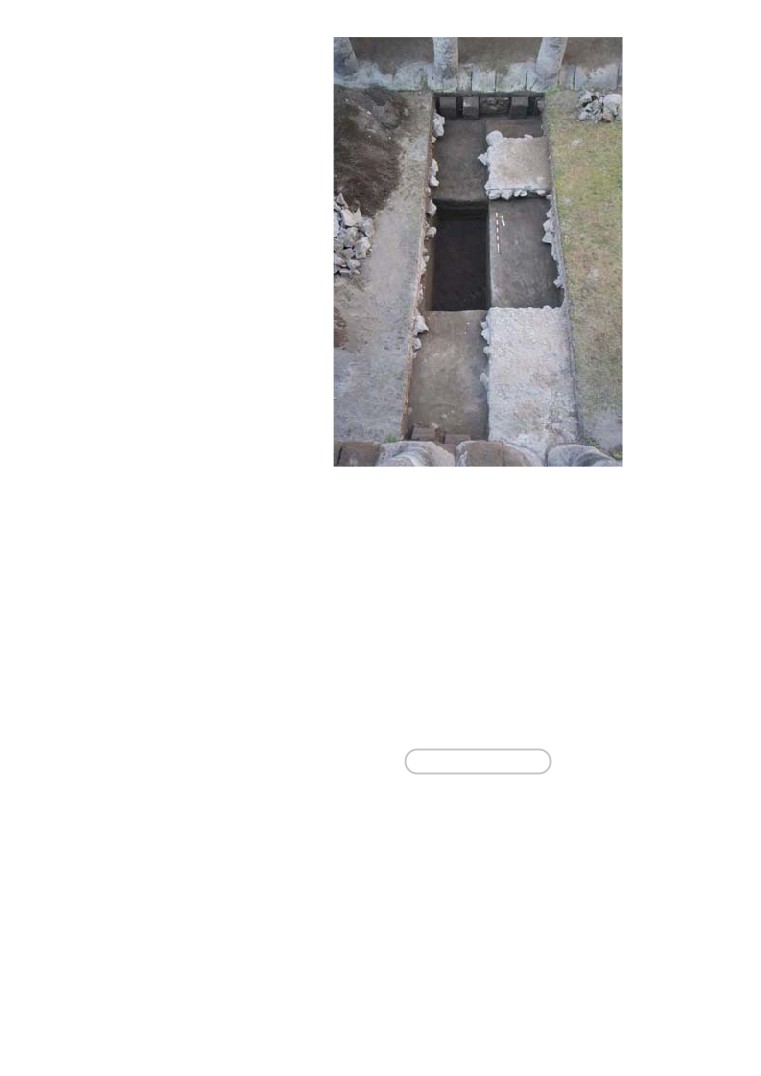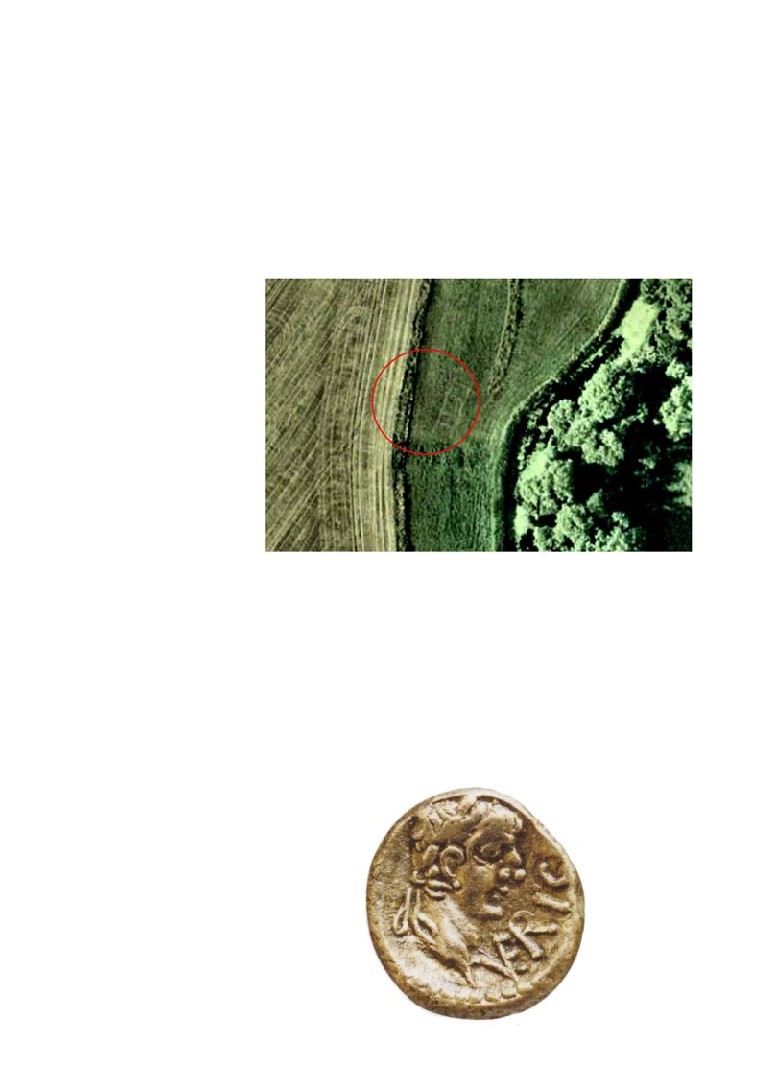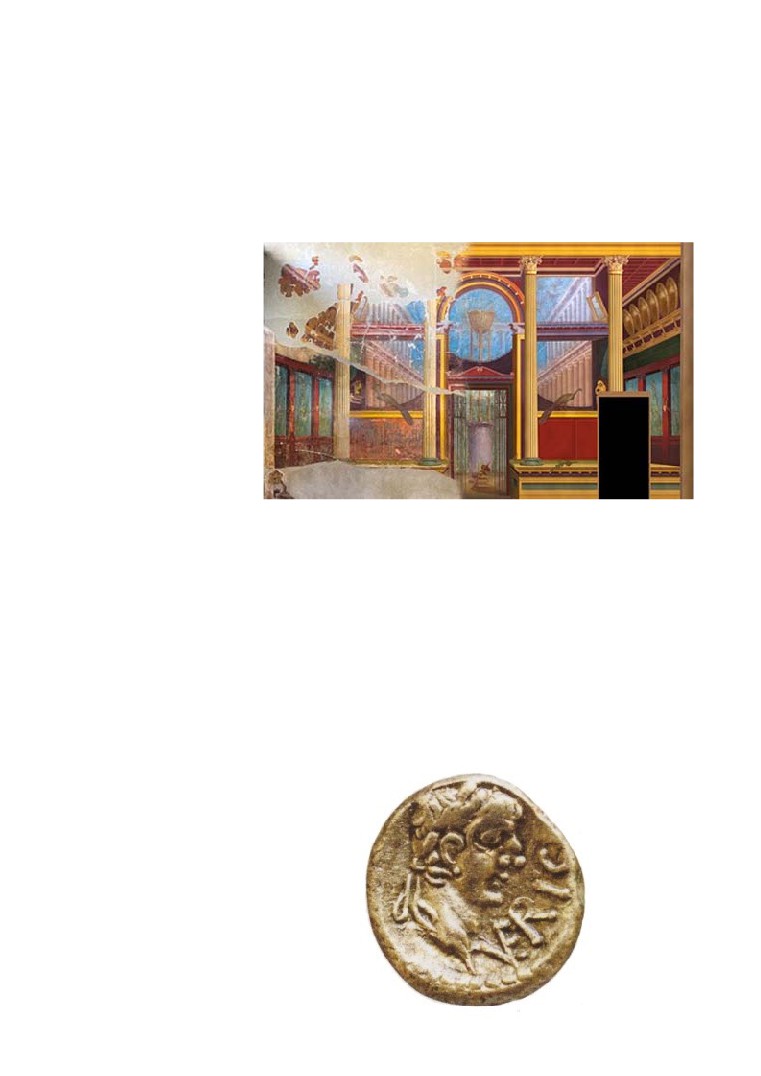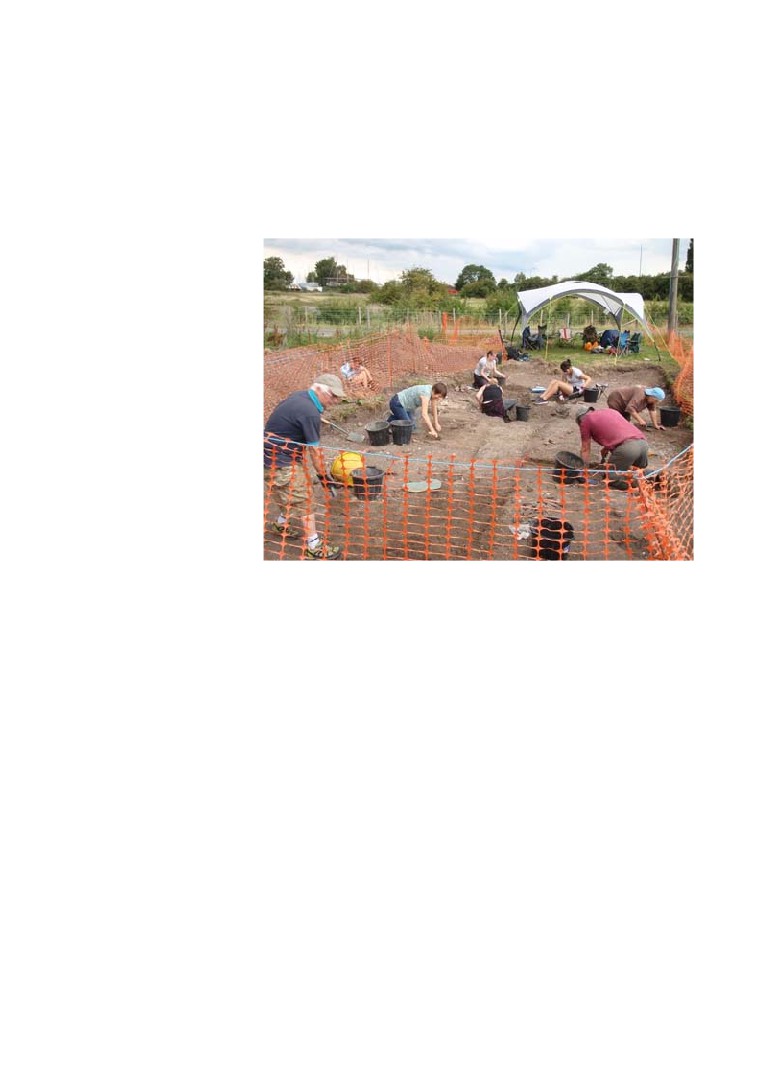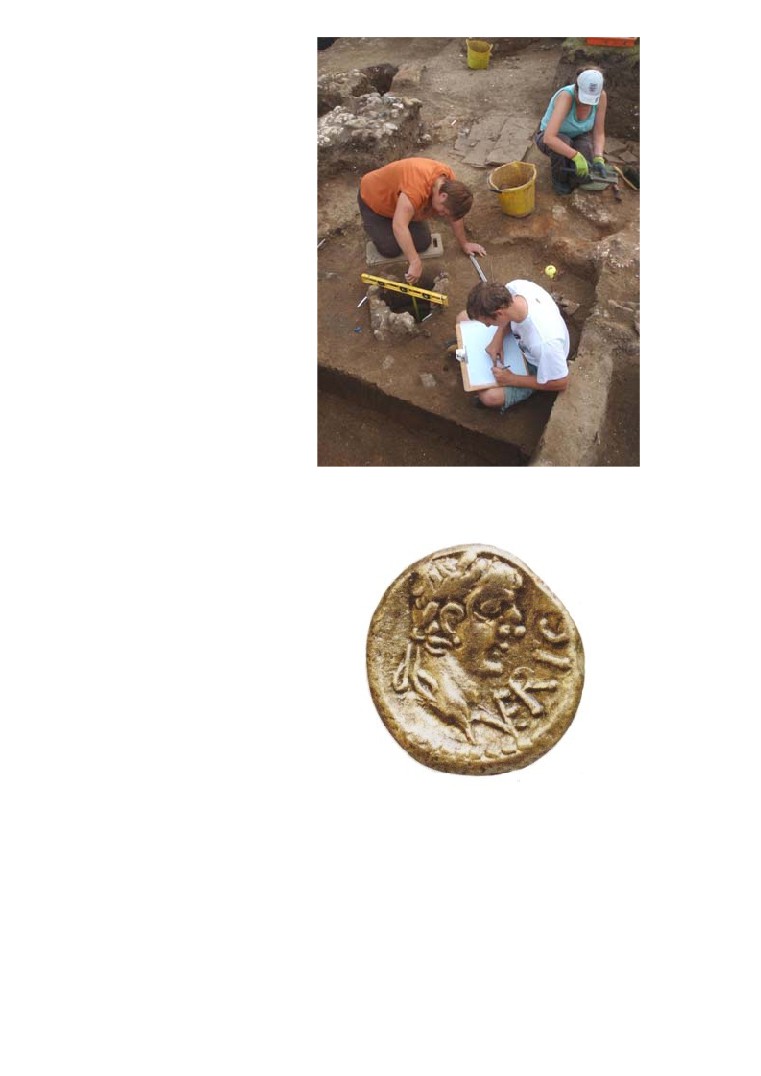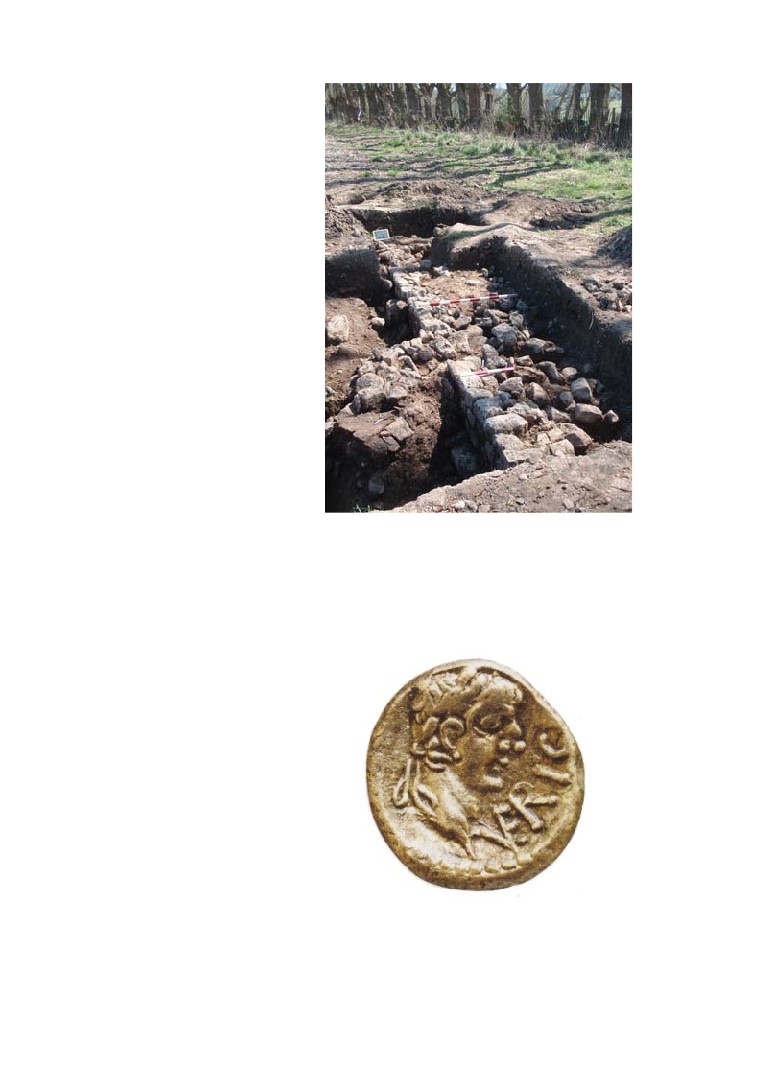WELCOME
CHRISTMAS!
THE KAFS YEAR SO FAR AND
OTHER YEARS...
2018 GEOPHYSICAL SURVEYS
AND EXCAVATIONS AT
TESTON ROMAN VILLA
Dear Reader, we will be emailing a Newsletter
‘VICTORIAN GLASS’ AT
CANTERBURY CATHEDRAL
each quarter to keep you up to date with news
FOUND TO BE FROM THE 12
and views on what is planned at the Kent
ARCHAEOLOGISTS DETECT
Archaeological Field School and what is
20-METRE SHIP USING
MOTORISED HIGH-
happening on the larger stage of archaeology
RESOLUTION GROUND-
both in this country and abroad. To become a
PENETRATING RADAR
member or subscribe to the free newsletter go
A GREEK MERCHANT SHIP
DATING BACK MORE THAN
2,400 YEARS HAS BEEN
bottom right hand corner click where it says
FOUND LYING ON ITS SIDE
‘Click Here’.
OFF THE BULGARIAN COAST.
I hope you enjoy!
CHRISTMAS GIFTS/BLING!
Paul Wilkinson.
CHRISTMAS GIFTS/AND
SOMETHING FOR THE HOME
SPORTSMAN OF THE YEAR:
GAIUS APPULEIUS DIOCLES, A
ROMAN CHARIOTEER EARNED
MORE THAN RONALDO
ARCHAEOLOGICAL GUIDE TO
Breaking News: Christmas!
POMPEII.
THE OLD WAYS
It was a public holiday celebrated around December 25th in the family home. A time
THE SILK ROADS: A NEW
for feasting, goodwill, generosity to the poor, the exchange of gifts and the
HISTORY OF THE WORLD
decoration of trees. But it wasn’t Christmas. This was Saturnalia, the pagan Roman
SCYTHIANS: WARRIORS OF
winter solstice festival. But was Christmas, Western Christianity’s most popular
ANCIENT SIBERIA
festival, derived from the pagan Saturnalia?
ANGLO-SAXON BIBLE
RETURNS TO ENGLAND AFTER
1302 YEARS
BEOWULF IN KENT BY DR
PAUL WILKINSON
THE KAFS EVENTS
COURSES FOR 2019
KAFS BOOKING FORM
KAFS MEMBERSHIP FORM
The first-century AD poet Gaius Valerius Catullus described Saturnalia as ‘the best
of times’: dress codes were relaxed, small gifts such as dolls, candles and caged
birds were exchanged.
Saturnalia saw the inversion of social roles. The wealthy were expected to pay the
month’s rent for those who couldn’t afford it, masters and slaves to swap clothes.
Family households threw dice to determine who would become the temporary
Saturnalian monarch. The poet Lucian (AD 120-180) has the Roman god Saturn say
in his poem, Saturnalia:
‘During my week the serious is barred: no business allowed. Drinking and being
drunk, noise and games of dice, appointing of kings and feasting of slaves, singing
naked, clapping
an occasional ducking of corked faces in icy water- such
are the functions over which I preside’.
Saturnalia grew in duration and moved to progressively later dates under the
Roman period. During the reign of the Emperor Augustus (63 BC-AD 14), it was a
two-day affair starting on December
17th. By the time Lucian described the
festivities, it was a seven-day event. Changes to the Roman calendar moved the
climax of Saturnalia to December 25th, around the time of the date of the winter
solstice.
BACK TO MENU
The KAFS year so far and other years...
KAFS ‘dig’ at Star Hill near Bridge- can you name the diggers and the year? First
answer on a postcard wins a free course!
This year:
Oplontis, near Pompeii, Italy Excavations
Teston Roman Villa, Kent and Hollingbourne, Kent
BACK TO MENU
2018 geophysical surveys and
excavations at Teston Roman Villa
Excavation by the Kent Archaeological Field School over the 2018 summer holidays
has solved an archaeological mystery that that had eluded archaeologists for the
last 100 years. In 1872 Arthur Fremling found in his hop gardens the remains of a
Roman bath house and the find was described as being ‘about four English miles
from Maidstone, on the left side of the river, are to be seen the remains of a
villa
the situation is pleasant, and as is usual in Roman sites, well chosen,
being on a crest of a gently sloping valley looking over the river [Medway]’.
In October 1991 Canterbury Archaeological Trust were called to a site in Teston, just
west of Maidstone to investigate Roman remains uncovered by Southern Water
whilst constructing a new sewer. It became apparent that a Roman building had
been impacted on and CAT’s work uncovered walls that for the most part had been
robbed out. Later in the
20th century the Maidstone Archaeological Group
investigated the site but could not find the 19th century discovery of the bath house.
Last year a geophysical survey took place down slope from the CAT discoveries and
possible masonry walls identified. Subsequently the Kent Archaeological Field
School were invited by the owner to investigate the site and a field walking weekend
in March identified an area of disturbed Roman masonry below that of the CAT
discovery and above that of the geophysical survey. Hand digging of test pits
identified a substantial deposit of Roman building material and on opening up the
trench the south wall stretching for 39m was exposed and running east-west, At
each end substantial towers or pavilions were also exposed. Rooms with hypocaust
heating were exposed to the north and stretching into the adjoining field and
towards CATs investigations in 1991.
Marble tessarae from a mosaic pavement were found in the hypocausts along with
copious amounts of painted plaster and window glass. The location of the 1872
discovery was identified and is situated in the north-west area of the villa (see above
plan). It seems the villa developed over the four centuries of Roman government
and although we have identified the main part of the villa there is still areas of the
site which may have additional buildings.
Decorated Samian ware sherds date the construction of the towers or pavilions to
the 2nd century AD whilst North Thameside ware dated- the main range to late 1st
century AD, whilst coins recovered from the site range from Nerva (96-98AD) to
Honorius (393-423AD). Anglo Saxon pottery found adjacent to the main range show
occupation in the 7th century AD
Situated in the upper reaches of the River Medway valley with water connections to
Rochester and London in a setting which is Arcadian the villa estate would have
been the centre of a burgeoning enterprise with the opportunity to exploit the natural
resources of woodland, Kentish rag stone and first class grazing for herds and
flocks. It is also within a day’s journey by water to London and we know from Pliny
and Ausonius the preoccupation of the Roman landed gentry with the Arcadian
delights of the countryside.
"The clear river's tidal flow
Takes me by boat from home,
And brings me home again
Not far from town I live,
Yet not hard by
I change about.
And get the best of town
And country, turn by turn."
These easy verses of Ausonius, a 4th century villa owner near Bordeaux indicate the
preoccupation of the Roman landed gentry with the Arcadian delights of the
countryside.
But the same mutuality between town and country was at work when the poetic
oxymoron of a well-groomed arcadia took the form of a Roman country villa. The
ancient ideal of country life as a corrective to the corruption, intrigue, and disease of
the town was always a spur to rustication in a locus amoerms, a "place of delight". It
was no accident that Pliny the Younger cited the closeness of his seaside villa at
Laurentinum, seventeen miles from Rome, as one of its chief virtues.
Laurentinum by-the-sea was a weekend place for Pliny, "large enough to afford a
convenient, though not sumptuous reception for my friends." It had a breezy atrium,
hot tubs, a well-stocked library, figs and mulberries in the garden, terrific views over
the water, and a steady supply of fresh seafood. Pliny thought of the view, "not as a
real land, but as an exquisite painting". See ‘courses’ to participate-
BACK TO MENU
‘Victorian Glass’ at Canterbury Cathedral found to be
from the 12th century
Stained glass panels at Canterbury Cathedral, previously thought to be the work of
Victorian restorers, have been found to date to the late 12th century, making them
the earliest known art works depicting pilgrims travelling to Canterbury.
Researchers have just made the exciting discovery at the beginning of a detailed
study of the world-renowned Miracle Windows in the Trinity Chapel. An analysis of
the panels, currently removed from the window and in the stained glass
conservation studio for study, proved that they date back to the 1180s, within 20
years of Thomas Becket’s death and
200 years before Chaucer wrote The
Canterbury Tales.
One of the panels shows pilgrims on foot, pilgrims on horseback and a disabled
pilgrim on crutches on the road together. The incredible detail includes the bright
green and yellow boots of the pilgrims, which were painted with horizontal stripes
and a polka dot decoration. This highly elaborate footwear may have been meant to
underline the importance of the pilgrimage.
Researcher Rachel Koopmans from Toronto’s York University said: “Our work was
prompted by an early photograph of the window which showed these panels
decades before they were thought to have been made. Careful analysis has proved
that while most of the heads were replaced by a modern restorer, the majority of the
glass is original and the panels are genuine medieval compositions. The date of the
panels has been fixed by the distinctive aesthetic style of the glass, which is very
similar to glass dated to 1180, as well as the date of the completion of the rebuilding
of the chapel in which the window is found, 1182-1184.” A second medieval panel,
also thought to have been a Victorian restoration, depicts pilgrims arriving at
Canterbury and queueing up to receive the blood and water relic, a much diluted
mixture of Becket’s blood that pilgrims drank in the hope of miraculous healing.
Director of Canterbury’s Stained Glass Studio Leonie Seliger said: “This discovery is
terrifically exciting. We are delighted to be able have this opportunity for close-up
analysis of the panels which has provided us with fresh information such as being
able to read the inscriptions which had previously been deemed illegible.”
Dr Koopmans is an associate professor of history and is writing a new catalogue of
the glass relating to Thomas Becket in the Cathedral. The project is funded by the
Friends of Canterbury Cathedral and Dr Koopmans’ residence is supported by a
Visiting Fellowship from the British Academy.
Once the panels have been studied and analysed, they will be returned to the
window.
BACK TO MENU
Archaeologists detect 20-metre ship using motorised high-
resolution ground-penetrating radar
Archaeologists have discovered a Viking ship burial in Norway using ground-
penetrating radar that suggests the 20-metre keel and many of its timbers remain
well preserved just half a metre below the topsoil.
Image generated from a geo-radar showing a Viking ship buried near Halden
The ship lies in farmland in Østfold county in south-east Norway. Just three other
intact ship burials have been recorded in the country; the survival of this one is
remarkable because the imposing burial mound that once covered it has long since
been ploughed out. Another mound, Jelle mound, still rises high in the field, and the
research has also traced the outlines of at least eight other previously unknown
burial mounds that once surrounded it, and five nearby longhouses.
Project leader Lars Gustavsen, an archaeologist from the Norwegian Institute for
Cultural Heritage Research (Niku), said: “The ship burial does not exist in isolation,
but forms part of a cemetery which is clearly designed to display power and
influence.”
There are no immediate plans for excavation, but further non-invasive research will
map the remains and assess their condition.
The find was described as “incredibly exciting” by Knut Paasche, an expert on
Viking ships at Niku. The researchers worked with motorised high-resolution ground-
penetrating radar developed by the Ludwig Boltzmann Institute for Archaeological
Prospection and Virtual Archaeology in Austria.
“This new ship will certainly be of great historical significance as it can be
investigated with all modern means of archaeology,” Paasche said.
BACK TO MENU
A Greek merchant ship dating back more than 2,400
years has been found lying on its side off the Bulgarian
coast.
The 23m (75ft) wreck, found in the Black Sea by an Anglo-Bulgarian team, is being
hailed as officially the world's oldest known intact shipwreck. The researchers were
stunned to find the merchant vessel closely resembled in design a ship that
decorated ancient Greek wine vases.
The rudder, rowing benches and even the contents of its hold remain intact. "It's like
another world," Helen Farr from the expedition told the BBC.
"It's when the ROV [remote operated vehicle] drops down through the water column
and you see this ship appear in the light at the bottom so perfectly preserved it feels
like you step back in time."
The reason the trading vessel, dating back to around 400 BC, has remained in such
good condition for so long is that the water is anoxic, or free of oxygen. Lying more
than 2,000m below the surface, it is also beyond the reach of modern divers.
The vessel was one of many tracking between the Mediterranean and Greek
colonies on the Black Sea coast. It was discovered more than
80km off the
Bulgarian city of Burgas.
The team used two underwater robotic explorers to map out a 3-D image of the ship
and they took a sample to carbon-date its age.The vessel is similar in style to that
depicted by the so-called Siren Painter on the Siren Vase (above) in the British
Museum. Dating back to around 480 BC, the vase shows Odysseus strapped to the
mast as his ship sails past three mythical sea nymphs whose tune was thought to
drive sailors to their deaths.
As yet the ship's cargo remains unknown and the team say they need more funding
if they are to return to the site. "Normally we find amphorae (wine vases) and can
guess where it's come from, but with this it's still in the hold," said Dr Farr.
"As archaeologists we're interested in what it can tell us about technology, trade and
movements in the area."
The ship, which is lying on its side with its mast and rudders intact, was dated back
to 400 BC -- a time when the Black Sea was a trading hub filled with Greek colonies.
The team said the vessel, previously only seen in an intact state on the side of
ancient Greek pottery, was found at a depth of more than 2,000 metres (6,500 feet).
The water at that depth is oxygen-free, meaning that organic material can be
preserved for thousands of years.
"A ship, surviving intact, from the Classical world, lying in over 2km of water, is
something I would never have believed possible," said Professor Jon Adams from
the University of Southampton in southern England, the project's main investigator.
"This will change our understanding of shipbuilding and seafaring in the ancient
world," he said.
BACK TO MENU
Christmas Gifts/Bling!
historic jewellery and include Celtic to Early Roman to Victorian to Art Deco at
affordable prices...
BACK TO MENU
Christmas Gifts/and something for the home-
Everything from Roman pottery-Terra Sigillata to the Ancient Roman folding stool of
Hadrian and all can be found at https://theancienthome.com/collections/roman-
BACK TO MENU
Sportsman of the year: Gaius Appuleius Diocles, a Roman
charioteer earned more than Ronaldo
Cristiano Ronaldo's billing as the world's highest paid sports star has been
challenged by a historian who claims a little known Roman charioteer holds that title
(Tom Kington of the Times writes). Gaius Appuleius
Diocles was such a successful racer at the Circus Maximus in Rome that he earned
the modern equivalent of $15 billion in his career, far more than the footballer
Ronaldo could dream of, Peter Struck, a professor of Classics at the University of
Pennsylvania, claims.
"Diocles is not well known today, but he out earned all of today's superstars," said
Professor Struck, who found a monument to Diocles built by his fellow charioteers
that listed his total earnings as 35,863,120 sesterces.
Diocles was from Portugal, like Ronaldo, and arrived in Rome to make his name.
"He was probably illiterate and this was his best shot at making a life," Professor
Struck said. "To survive you needed physical strength and a mindless courage.
Death was common, which is what the crowd lusted after."
Diocles survived 24 years in the arena, was known for fast, final sprints and earned
the equivalent of $625 million a year — six times what Ronaldo was paid last year.
On his monument, erected in 146 AD, his admirers wrote Diocles retired at the age
of "42 years, 7 months, and 23 days" as "champion of all charioteers".
His earnings were enough to provide grain for the city of Rome for a year or to pay
all Roman soldiers for about two months when the empire was at its height,
Professor Struck calculated. He compared that with the US armed forces' wage bill
to arrive at the figure of $15 billion.
"There is no way of converting ancient amounts to modern money unless you
calculate how much something cost then to how much it costs now,"
Mary Beard, professor of history at Cambridge, said. "Struck's method is sensible."
BACK TO MENU
Books for Christmas 1/
Archaeological Guide to Pompeii.
Rating: 5 stars
Author Paul Wilkinson and published by Taurus Books
Pompeian pilgrims will be in good hands with Paul Wilkinson, an old Pompeian
hand, archæologist, journalist, tour-leader and BBC documentary maker.
The index is serviceable, though somewhat choosy on no obvious principle,
especially regarding the names of modern scholars. After a tersely helpful Timeline
from antiquity to AD 1997, the Introduction and trio of chapters survey everyday life
in Pompeii, plus detailed descriptions of the Amphitheatre Riot of AD 59 and the
eruption itself,with full transcriptions of Pliny the Younger’s pair of autoptic accounts.
These pages display how well Wilkinson knows his Pompeian onions.
This book stands or falls with the archæological sites-guide that makes up its
second part. Here, Wilkinson is faultless. His diagrams are clear, the relevant
information dispensed without fuss, with due acknowledgement to the many
archæologists and epigraphers involved. All this written in clear, jargon-free English,
nicely leavened with wit.
The Romans had Pompey the Great. In Wilkinson, we have a Great Pompeian.
Professor Barry Baldwin
BACK TO MENU
Books for Christmas 2/
The Old Ways
Rating: 5 stars
Author Robert Macfarlane
Finding a bad word to be said about Robert Macfarlane is no easy task. The inside
front cover of the paperback lists 15 authors who made The Old Ways one of their
books of the year last year; the next four pages contain quotations from 35 reviews,
all saying, essentially, "Read this book." There comes a point when exhortation to do
something proves counterproductive; and, further on from that point, it becomes
perverse not to do it.
So I join, eventually, the end of a long line of Macfarlane fans. He is part of what we
are being told these days is a new generation of travel writers who create
personalised accounts of some form of extreme, or at least interesting, geographical
tour. Of course anywhere is interesting if you bring enough attention to it, and this
kind of thing has been going on since Marco Polo's stories were written up in the
13th century.
Macfarlane tends to prefer the wilder and woollier environments. His second book,
The Wild Places, tried to get as close to wilderness as these islands can provide; I
have not read his first, Mountains of the Mind, because of a review that said he
describes whittling his frozen fingers with a penknife while crawling up, or down,
some godforsaken peak.
We are spared that kind of scene here, I am pleased to report, and I must also add
that "godforsaken" is pretty much the last word Macfarlane would use to describe a
mountain. In his chapter on walking in the Himalayas, he quotes a companion on
the concept of darshan, a Sanskrit word that "suggests a face-to-face encounter
with the sacred on earth; with a physical manifestation of the holy", and we are
reminded that the Sherpas who accompanied the first expeditions had no word to
describe the summit of a mountain, as that was where the gods lived, so it would be
blasphemous even to try to reach one.
But here, unlike in Mountains of the Mind, Macfarlane is more interested in passes
and paths than in summits. He has managed, as far as I can see, to avoid repeating
himself even as he revisits previous haunts. He describes this as "the third book in a
loose trilogy about landscape and the human heart", and that "loose" means it
doesn't matter which order you read them in, or if you only read one. This is really a
book about walking - though there is a good deal, too, about the paths of the sea. It
is illuminating to be told that before the Romans came, there was an extraordinary
amount of sea traffic around the British Isles and Europe, which helps account for
the remarkable genetic similarity of people from various coastal regions extending
from Orkney to Spain. He helps us understand what it is to see the water as criss-
crossed by routes as the land, partly by describing what it feels like to sleep in an
open boat where the only navigational aid is the Pole Star.
BACK TO MENU
Books for Christmas 3/
The Silk Roads: A New History of the World
Rating: 5 stars
Author: Peter Frankopan
Over my life I have tried to read a number of very thick books that cover the world
from the beginning of historical time and have always failed. The books were either
too dense or too dry or did not hold my interest. Yet I knew to read such a book was
really important. I had too many gaps in my knowledge and like many of us would fill
it in with childhood skewed religious classes or flimsy psychological, sociological
and feminist understandings. I needed this so desperately and this book was able to
deliver a wealth of knowledge, a bit of depth to my understanding of world
economics and politics and power dynamics but also, to be honest, despair on the
relentless suffering that most of our fellow beings experience for the majority of their
lives and in all time periods although the races, classes and ethnicities all take their
turn.
What was most appealing about this book to me was that the eye view of whatever
is happening in each time period was primarily kept on the area of the world we
know as the Silk Roads. The turbulent Middle East and the mysterious lands of
Central Asia. Mr. Frankopan was able to give these cultures and places more of a
voice in their importance as well as contribution to knowledge and culture that most
Eurocentric or Far East centric historical books tend to give. I really appreciated this
and helped me understand and integrate gaps in understanding in what I knew from
my few readings in European, American and Chinese history.
Frankopan has accomplished quite a feat in being to condense a world history into
bite size chunks that layered knowledge onto understanding and at times even
illumination as to how we got into the huge mess that is our modern world. His
writing was interesting, neutral, at times entertaining and always with his eye on his
central thesis of the most strategically/economically/culturally relevant areas for
whatever superpowers happened to be flexing their muscles were in the areas of
what we know as the Middle East and Central Asia.
Alice Smith
BACK TO MENU
Must see exhibitions/1
Scythians: warriors of ancient Siberia
Ending
-
14 January
2018, British Museum, London, Room
30, Sainsbury
Exhibitions Gallery. £16.50, Members/under 16s free 2,500 years ago groups of
formidable warriors roamed the vast open plains of Siberia. Feared, loathed,
admired - but over time forgotten... Until now.
This major exhibition explores the story of the Scythians - nomadic tribes and
masters of mounted warfare, who flourished between 900 and 200 BC. Their
lifestyle and ferocity has echoed through the ages. Other groups from the Huns to
the Mongols have followed in the Scythians' footsteps
- and they have even
influenced the portrayal of the Dothraki in Game of Thrones. The Scythians'
encounters with the Greeks, Assyrians and Persians were written into history but for
centuries all trace of their culture was lost - buried beneath the ice.
Discoveries of ancient tombs have unearthed a wealth of Scythian treasures.
Amazingly preserved in the permafrost, clothes and fabrics, food and weapons,
spectacular gold jewellery - even mummified warriors and horses - are revealing
the truth about these people’s lives. These incredible finds tell the story of a rich
civilisation, which eventually stretched from its homeland in Siberia as far as the
Black Sea and even the edge of China.
Many of the objects in this stunning exhibition are on loan from the State Hermitage
Museum in St Petersburg. Scientists and archaeologists are continuing to discover
more about these warriors and bring their stories back to life.
Explore their lost world and discover the splendour, the sophistication and the sheer
power of the mysterious Scythians.
BACK TO MENU
Must see exhibitions/2
Anglo-Saxon bible returns to England
after 1302 years
British Library: Anglo-Saxon Kingdoms (Now till - 19 February 2019) Mark Brown
Arts correspondent of the London Times writes:
The oldest complete Latin bible in existence, which is one of the greatest Anglo-
Saxon treasures, is returning to England after 1,302 years.
The Codex Amiatinus is a beautiful and gigantic bible produced in Northumbria by
monks in 716 which, on its completion, was taken to Italy as a gift for Pope Gregory
II.
The British Library announced it had secured its loan from the Laurentian Library in
Florence in 2018 for a landmark exhibition on the history, art, literature and culture of
Anglo-Saxon England.
Claire Breay, the library's head of medieval manuscripts, said: "It is the earliest
surviving complete bible in Latin. It has never been back to Britain in 1,302 years but
it is coming back for this exhibition. It is very exciting."
The bible is considered one of the best surviving treasures from Anglo- Saxon
England but is not widely known outside academic circles. "I've been to see it once
and it is unbelievable," said Breay. "Even though I'd read about it and seen
photographs, when you actually see the real thing... it is a wonderful, unbelievably
impressive manuscript."
Part of its power is its size. Nearly half a metre high and weighing more than 75
pounds, over a thousand animal skins were needed to make its parchment.
It was one of three commissioned by Ceolfrith, the abbot of Wearmouth - Jarrow
monastery, and was a mammoth undertaking, said Breay. Of the others, one is lost
and another exists in small fragments at the British Library. Ceolfrith was part of a
team of monks who took the bible to Italy, though he never got to see it arrive as he
died on the journey, in Burgundy, France. It was kept at the monastery in San
Salvatore, Tuscany, before arriving at the Laurentian Library in the late 18th century,
where it has remained one of its greatest treasures. The Codex Amiatinus will be
displayed alongside the Lindisfarne Gospels and other illuminated manuscripts,
including the Benedictional of St Ethelwold, which includes the earliest surviving
image of the three wise men wearing crowns.Breay said the autumn exhibition
would shine light on the sophistication of Anglo-Saxon culture, a period often
dismissed as the Dark Ages.
These Highlights from the British Library’s outstanding collection of Anglo-Saxon
manuscripts will be presented alongside a large number of exceptional loans.
The Codex Amiatinus, one of three giant single-volume Bibles made at the
monastery at Wearmouth-Jarrow in the north-east of England in the early eighth
century and taken to Italy as a gift for the Pope in 716, will be returning to England
for the first time in more than
1300 years, on loan from Biblioteca Medicea
Laurenziana in Florence. It will be displayed with the St Cuthbert Gospel, also made
at Wearmouth-Jarrow around the same time, and acquired by the British Library in
2012.
We can also reveal that we will be displaying a number of major objects from the
Staffordshire Hoard, found in 2009, including the pectoral cross and the inscribed
gilded strip, on loan from Birmingham and Stoke-on-Trent City Councils.
Bringing together the four principal manuscripts of Old English poetry for the first
time, the British Library’s unique manuscript of Beowulf will be displayed alongside
the Vercelli Book on loan from the Biblioteca Capitolare in Vercelli, the Exeter Book
on loan from Exeter Cathedral Library, and the Junius Manuscript on loan from the
Bodleian Library.
BACK TO MENU
Background reading to the exhibition:
Beowulf in Kent by Dr Paul Wilkinson
Gary Budden writes:
It’s a compelling thought.; the monster Grendel inhabiting the bleak marshlands of
the Isle of Harty (part of what we now call Sheppey), just over the water from the
town of Faversham, separated from the mainland by The Swale. These islands tend
to overfeed the imagination; lost tribes can dwell there, grisly remains, evolutionary
dead ends, the sons of Cain.
Sheppey, and the other small islands that appear as odd unmarked blanks of green
on Google Maps, hold dark histories. Deadmans Island and Burnt Wick Island, so
close to home and practically unknown, are borderline inaccessible. They hold the
mass graves of Napoleonic French prisoners who died on the prison hulks (you’ll
know them from Great Expectations) and their bones now rise from the silt. Walk the
Hollow Shore between Faversham and Whitstable, look out over to the island
across the Swale, no one else around and the wind stinging the eyes. It’s easy to
feel Anglo-Saxon in such a place.
More than anything we want the monsters to be there.
I remember looking at the Beowulf manuscript in the British Library for a long time
the first time I saw it. It exerted a pull over me that beat any Chinese scroll or Lewis
Carroll diary. I read the Heaney translation, discovered American writer John
Gardner’s monster-perspective novel, Grendel, as part of the Fantasy Masterworks
series (terrible cover). I even watched the film written by Neil Gaiman and with Ray
Winstone as our founding English hero, getting entangled with a version of
Grendel’s mother who was rather sexier than I’d always imagined.
When I started researching the areas of north east Kent where I grew up, especially
the stretch of coast along the Thames estuary, I came across a curious piece of
information on the Faversham website:
Nearly ten years ago Dr Paul Wilkinson, a Swale archaeologist, and Faversham
journalist and business woman Griselda Mussett contributed a Faversham Paper
which makes a strong, and believable, claim based on topographical and oral and
written folk history that the Beowulf legend had its origins among place names that
were commonplace and are still to be seen around the Faversham area.
I tracked down the papers via the Faversham society and duly received them in the
post. I felt like I was falling down a rabbit hole of crackpot theories and dubious
speculation. If I’m honest, I wasn’t much interested in the truth of any of the theories.
The story appealed. Ray Winstone’s cockney accent suddenly made a sort-of
sense. Beowulf as the ex-Londoner moved out to the estuary.
Paul Wilkinson’s colour booklet, Beowulf on the Island of Harty in Kent proudly
proclaims AS SEEN ON TV in its bottom right corner, and features the Sutton Hoo
mask as its cover, which already seems to be muddying the issue. Near the
beginning, he does concede what we’re really dealing with here is mythology, not
archaeology or science:
Mythology, on the other hand, is concerned above all with what happened in the
beginning. It’s signature is ‘Once upon a time’ and our English beginning could be a
small island called Harty just off, but belonging to, the port of Faversham in Kent.
In this Kentish interpretation of the tale, Harty becomes Heorot (Hrothgar’s hall).
Heorot sits at the heart of a large Lathe, or administrative area, the schrawynghop,
an area ‘inhabited by one or several supernatural malignant beings’.
The theory even goes as to suggest that Beowulf was buried under Nagden mound
(a possible artificial hill that was destroyed in 1953 by men contracted to rebuild the
sea wall between Faversham and Seasalter, after the great North Sea flood.),
though by this point the theory has fallen more into wishful thinking and a lot of
‘maybes’ rather than anything that could approximate a credible argument. In my
fictional landscape, Grendel and his mother fit in well with the bodies of those dead
Frenchman, the prisons across the water on Sheppey, the bleak marshes, the
boxing hares and the black curlews of my own fictions.
I know these tidal flats and malignant bogs were dry land once, attached to the
Doggerland landmass that connected what was to become Britain to the coasts of
Germany and Denmark. My mind already is flowing with ideas, stories of the last
remaining malignant supernatural beings that inhabited Doggerland making a last
stand in the Kentish marshes. Wiped out by Ray Winstone. Grendel having his arm
pulled from its socket on the demon marsh in the Thames estuary. A dragon above
Faversham.
It’s a good idea for a story, right?
Maybe that’s enough.
BACK TO MENU
We will be back in Oplontis in the first three weeks in June 2018 for another
season of excavation and anyone can join our team. The only criteria is that you
are a member of the Kent Archaeological Field School www.kafs.co.uk and that you
have some experience or enthusiasm for Roman archaeology, Italian food and
Italian sunshine! See also the website for the project at www.oplontisproject.org.
Please note food, accommodation, insurance, and travel are not included.
Flights to Naples are probably cheapest with EasyJet. To get to Pompeii take a bus
from the Naples airport to the railway station and then the local train to Pompeii.
Hotels are about 50eu for a room per night.
We are staying at are the Motel Villa dei Misteri and the Hotel degli Amici.
Transport to Oplontis from Pompeii is not provided but most of the group use the
local train (one stop). Please note it can be hot so bring sun cream and insect
07885 700 112. We will meet up at 8am every Monday morning of the dig to start
the new week. This may be the last year so grasp the opportunity! Places are
limited.
Paul Wilkinson
BACK TO MENU
Courses at the Kent Archaeological Field School for 2019
will include:
Field Walking and Map Analysis Saturday 13th April Field work at its most basic
involves walking across the landscape recording features seen on the ground. On
this weekend course we are concerned with recognising and recording artefacts
found within the plough soil. These include flint tools, Roman building material,
pottery, glass and metal artefacts. One of the uses of field walking is to build up a
database for large-scale regional archaeological surveys. We will consider the
importance of regressive map analysis as part of this procedure. The course will
cover:
1. Strategies and procedures,
2. Standard and non-standard line walking, grid walking,
3. Pottery distribution, identifying pottery and building ceramics.
We will be in the field in the afternoons so suitable clothing will be necessary.
Cost £10 if membership is taken out at the time of booking. For non-members the
cost will be £25.
Wye Roman Villa and Water mill: Good Friday 19th April to Sunday 28th April
Archaeological excavation on the site of a recently discovered Roman Villa and
water mill at Wye in Kent
On this ten day course we shall look at the ways in which archaeological sites are
discovered and excavated and how different types of finds are studied to reveal the
lives of former peoples. Subjects discussed will include aerial photography,
regressive map analysis, HER data, and artefact identification. This course will be
especially useful for those new to archaeology, as well as those considering
studying the subject further. After tea break we will participate in an archaeological
investigation on a Roman building under expert tuition. Expert diggers are not
required to participate in the tool box talks.
Cost for members is £50 for the week or £10 a day if membership is taken out at the
time of booking. For non-members the cost will be £75 for the week or £15 a day.
Excavating at 'Villa B' at Oplontis next to Pompeii in Italy: 20th May to 6th June
2019
We will be spending four weeks in association with the University of Texas
investigating the Roman Emporium (Villa B) at Oplontis next to Pompeii. The site
offers a unique opportunity to dig on iconic World Heritage Site in Italy and is a
wonderful once in a lifetime opportunity. NOW FULLY BOOKED
Frescoes from Oplontis ‘Villa B’
The final investigation of a substantial Roman Aisled Building at Faversham in
Kent: Saturday 4th May to Sunday 12th May 2019.
Nine days investigating the final area of a substantial Roman building to find out its
form and function. This is an important Roman building and part of a larger Roman
villa complex which may have its own harbour. One of the research questions we
will be tackling is the buildings marine association with the nearby tidal waterway.
Cost for members is £50 for the week or £10 a day if membership is taken out at the
time of booking. For non-members the cost will be £75 for the week or £15 a day.
Training Week for Students on a Roman Villa at Faversham in Kent
It is essential that anyone thinking of digging on an archaeological site is trained in
the procedures used in professional archaeology. Dr Paul Wilkinson, author of the
best selling "Archaeology" book and Director of the dig, will spend five days
explaining to participants the methods used in modern archaeology. A typical
training day will be classroom theory in the morning (at the Field School) followed by
excavation at the Abbey Fields Roman villa near Faversham.
Topics taught each day are:
Monday 6th May (Bank Holiday): Why dig?
Tuesday 7th May: Excavation Techniques.
Wednesday 8th May: Site Survey.
Thursday 9th May: Archaeological Recording.
Friday 10th May: Small Finds.
Saturday and Sunday (free) digging with the team
A free PDF copy of "Archaeology" 3rd Edition will be given to participants. Cost for
the course is £100 if membership is taken out at the time of booking plus a
Certificate of Attendance. The day starts at 10am and finishes at 4.00pm. For
Archaeological Survey for Students: Saturday 6th July, Sunday 7th July 2019
An opportunity to participate in excavating and recording Roman features in the
landscape.
Cost for members is £10 a day if membership is taken out at the time of booking.
For non-members the cost will be £15 a day.
Excavation of a Roman villa at Teston near Maidstone: Saturday 3rd August to
Sunday 11th August 2019
Last year a geophysical survey took place down slope from the CAT discoveries and
possible masonry walls identified. Subsequently the Kent Archaeological Field
School were invited by the owner to investigate the site and a field walking weekend
in March identified an area of disturbed Roman masonry below that of the CAT
discovery and above that of the geophysical survey. Hand digging of test pits
identified a substantial deposit of Roman building material and on opening up the
trench the south wall stretching for 39m was exposed and running east-west, At
each end substantial towers or pavilions were also exposed. Rooms with hypocaust
heating were exposed to the north and stretching into the adjoining field and
towards CATs investigations in 1991.
Work in 2018 included searching for the masonry bath-house and two geophysical
surveys which has identified a major building to the rear of the main villa and this will
be the focus of our investigations in August 2019.
Cost for members is £50 for the week or £10 a day if membership is taken out at the
time of booking. For non-members the cost will be £75 for the week or £15 a day.
The Kent Archaeological Field School, School Farm Oast,
Graveney Road, Faversham, Kent ME13 8UP
Director Dr Paul Wilkinson MCIfA
KAFS BOOKING FORM
You can download the KAFS booking form for all of our forthcoming courses directly
from our website, or by clicking here
KAFS MEMBERSHIP FORM
You can download the KAFS membership form directly from our website, or by
BACK TO MENU
If you would like to be removed from the KAFS mailing list please do so by clicking here
